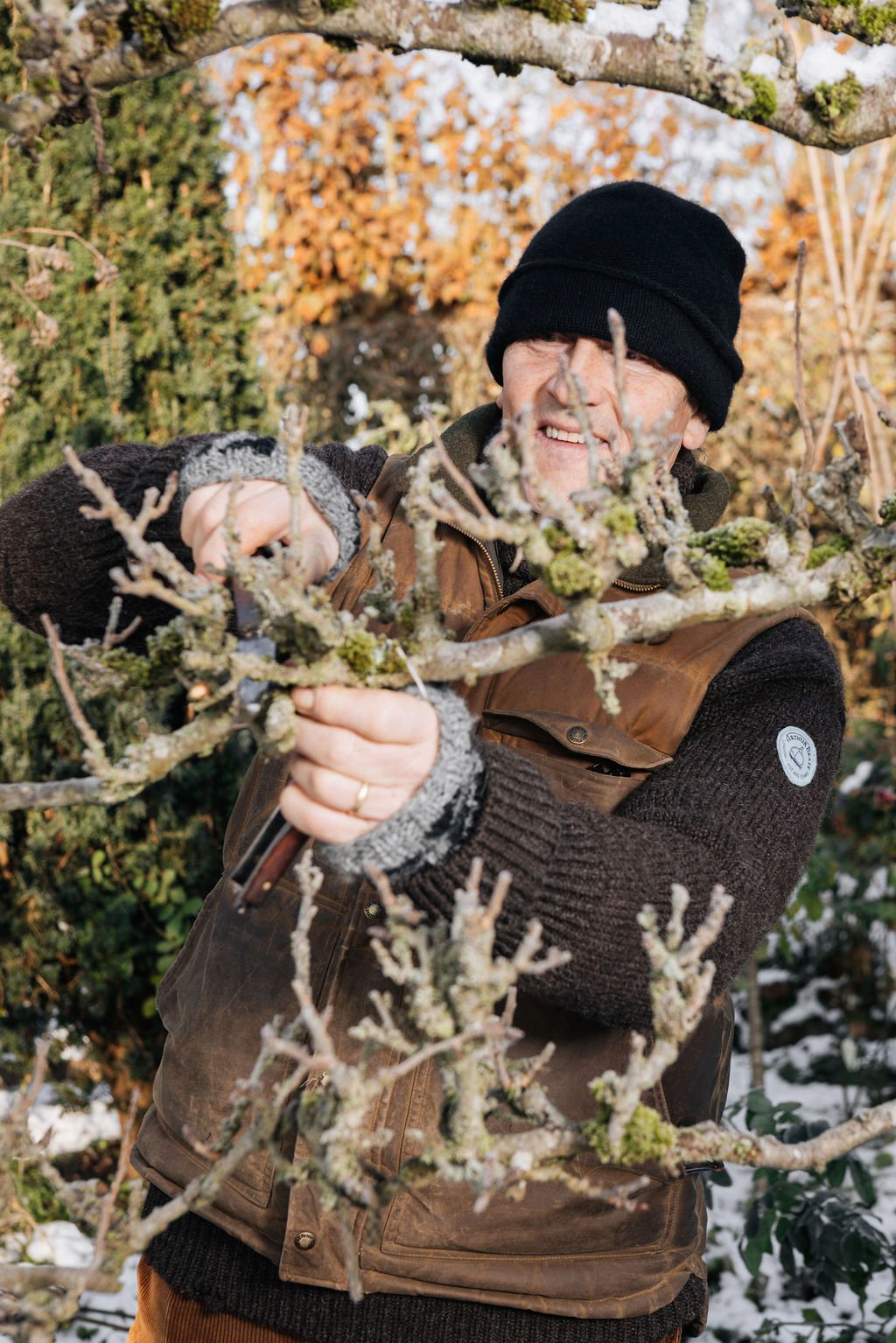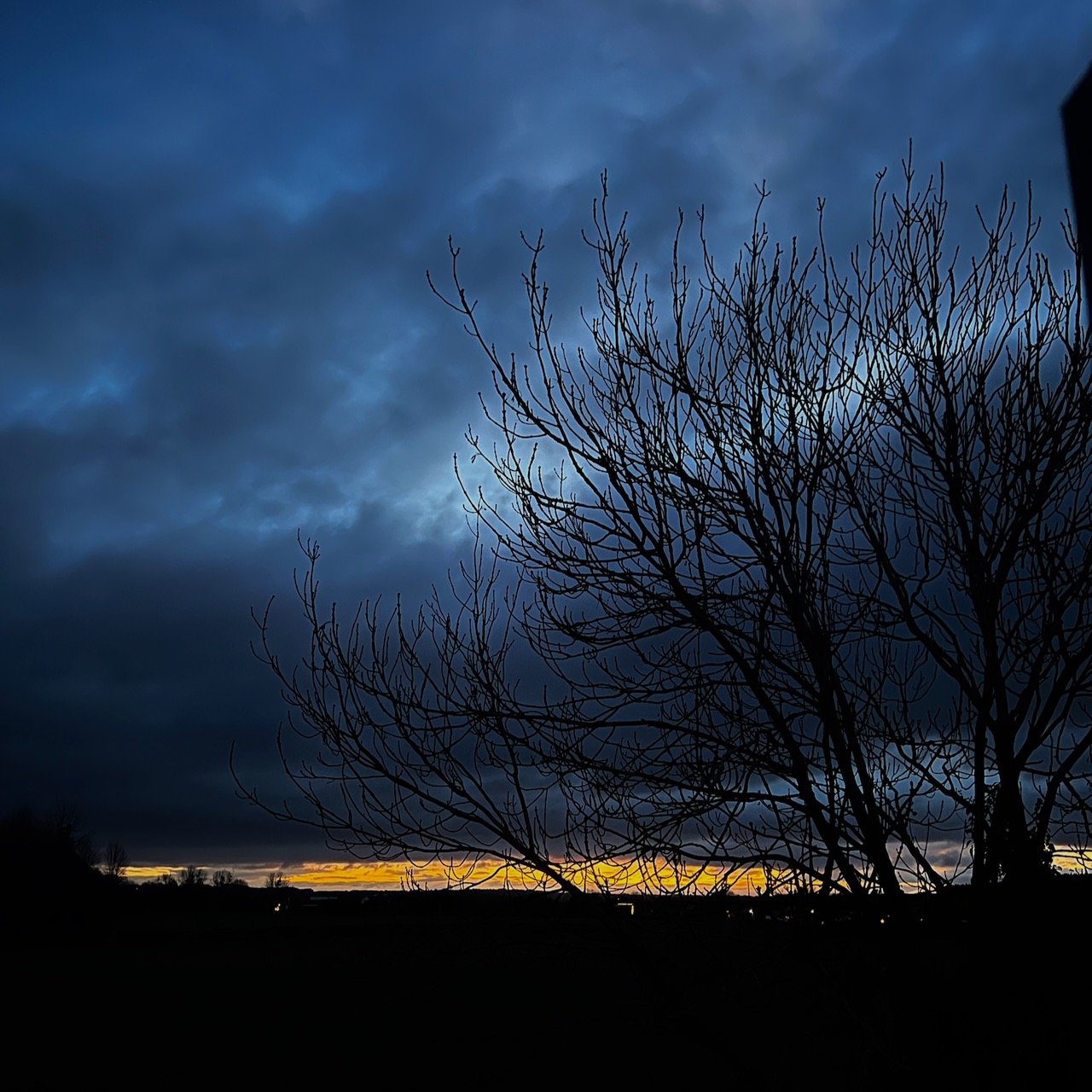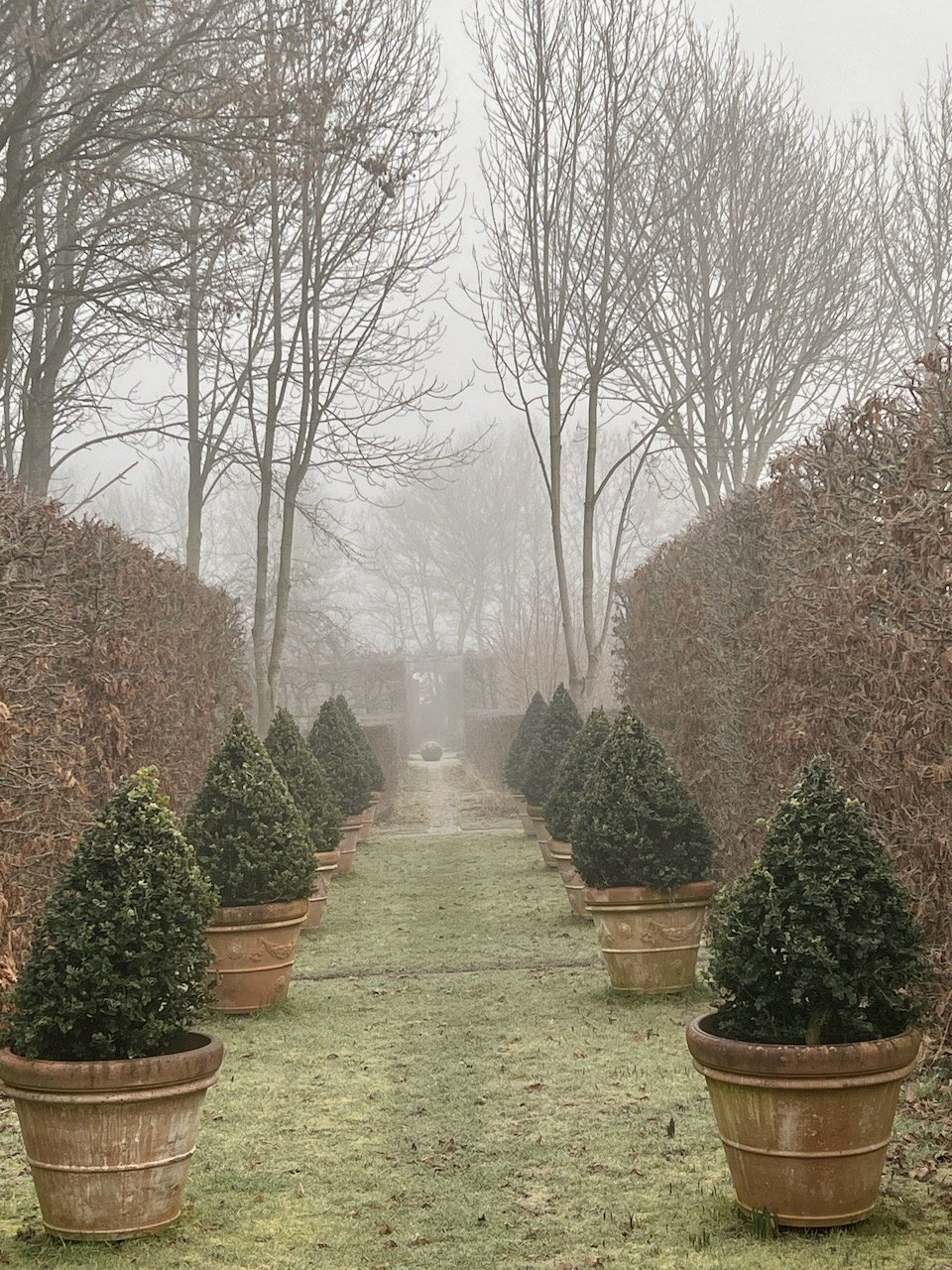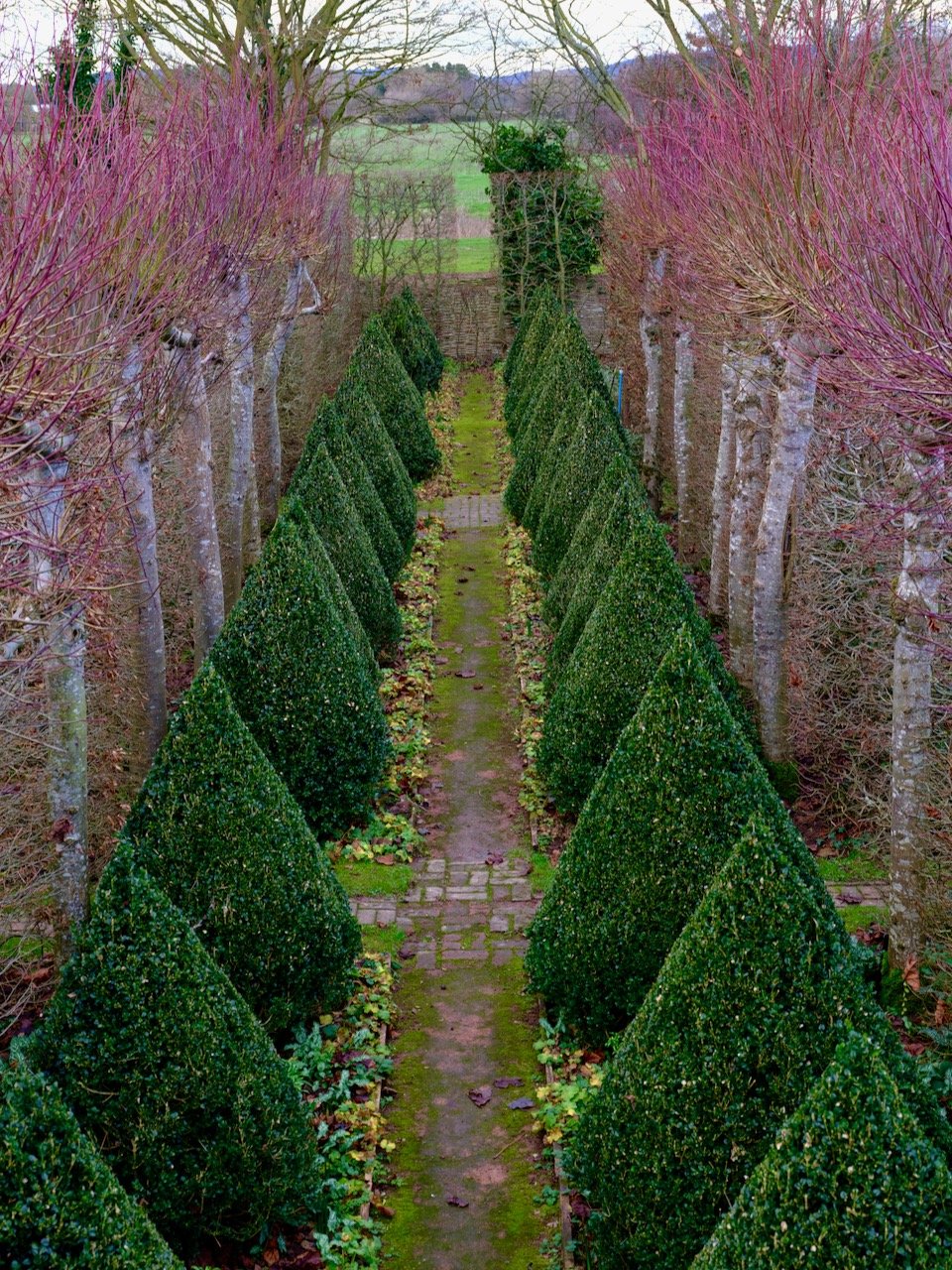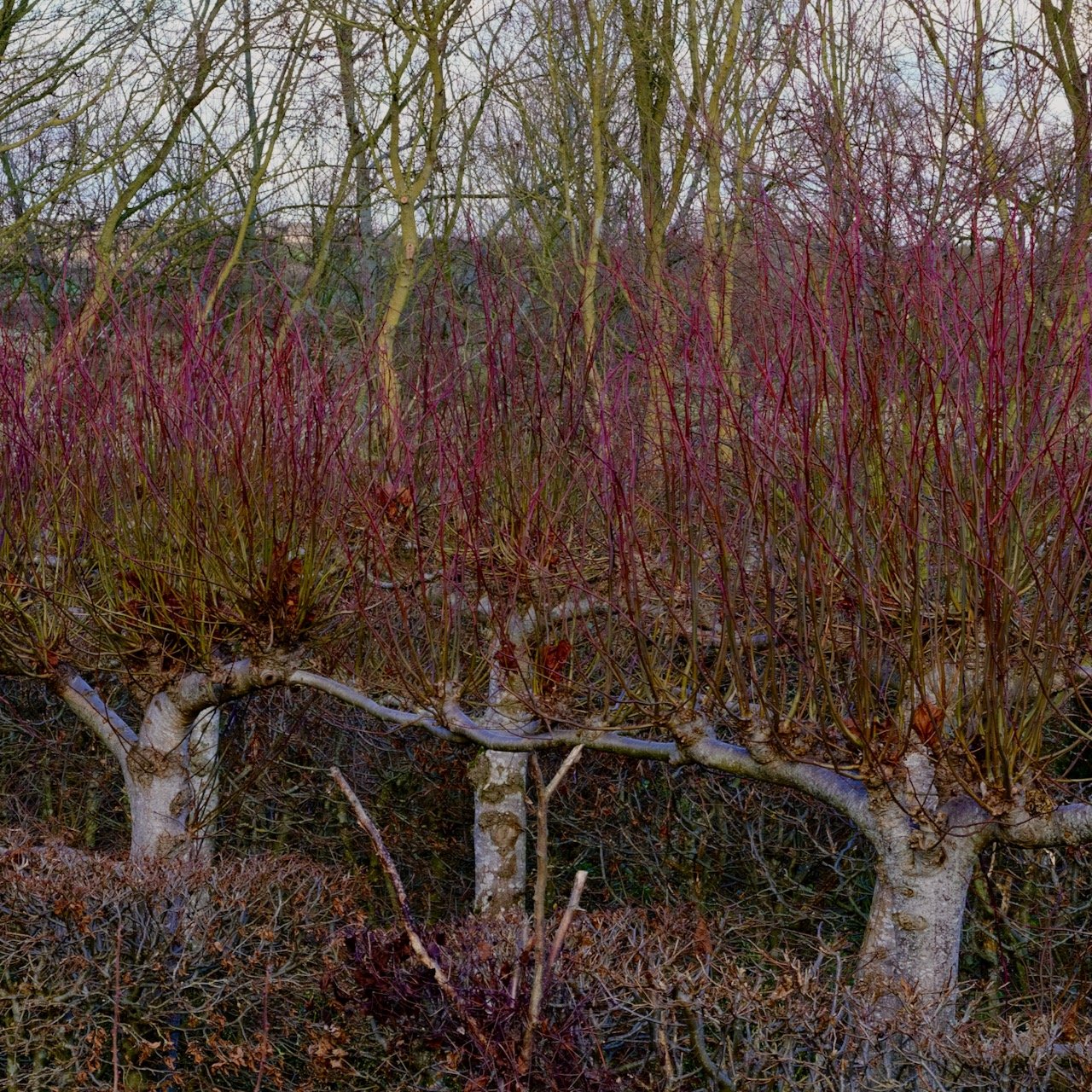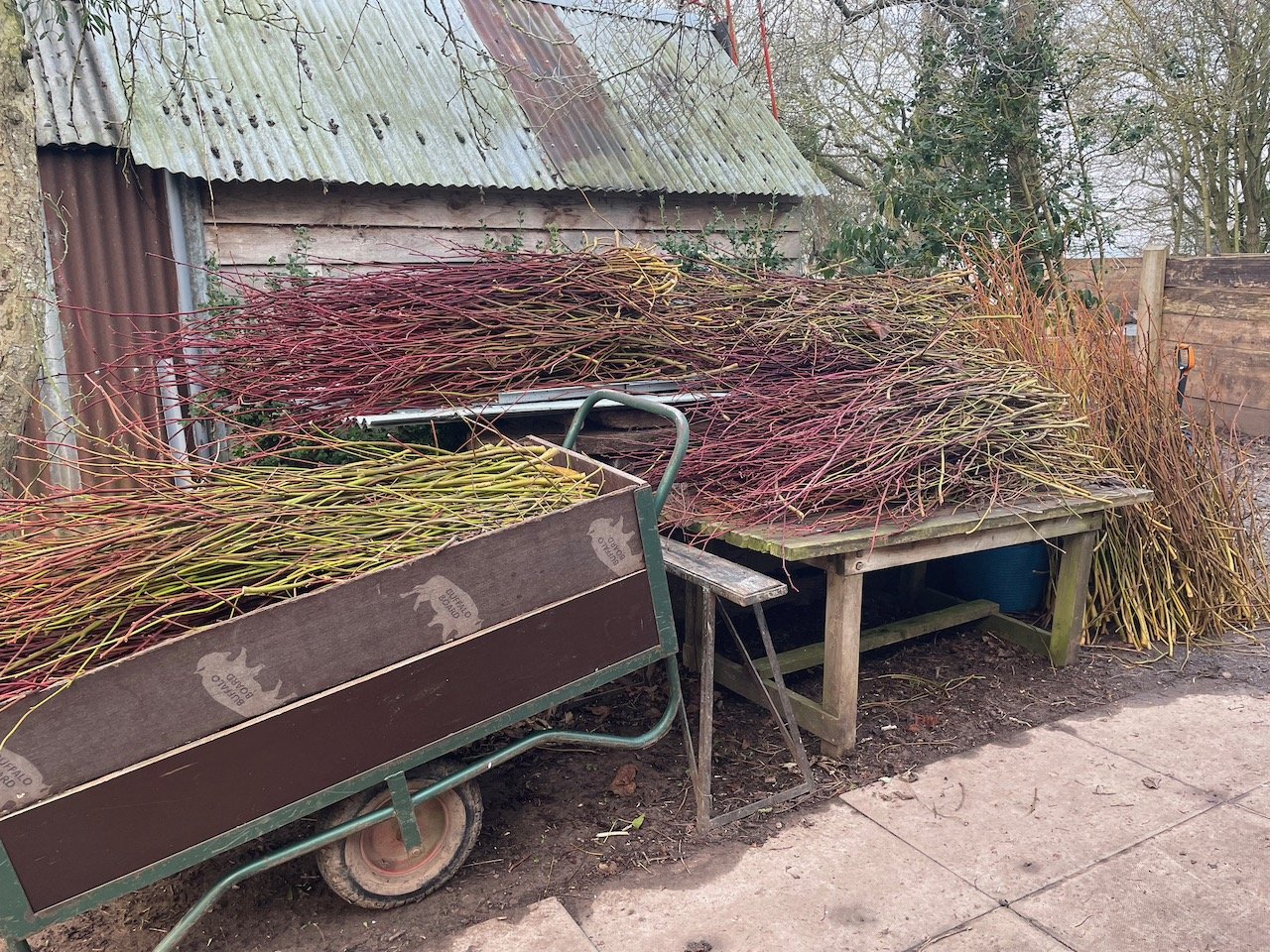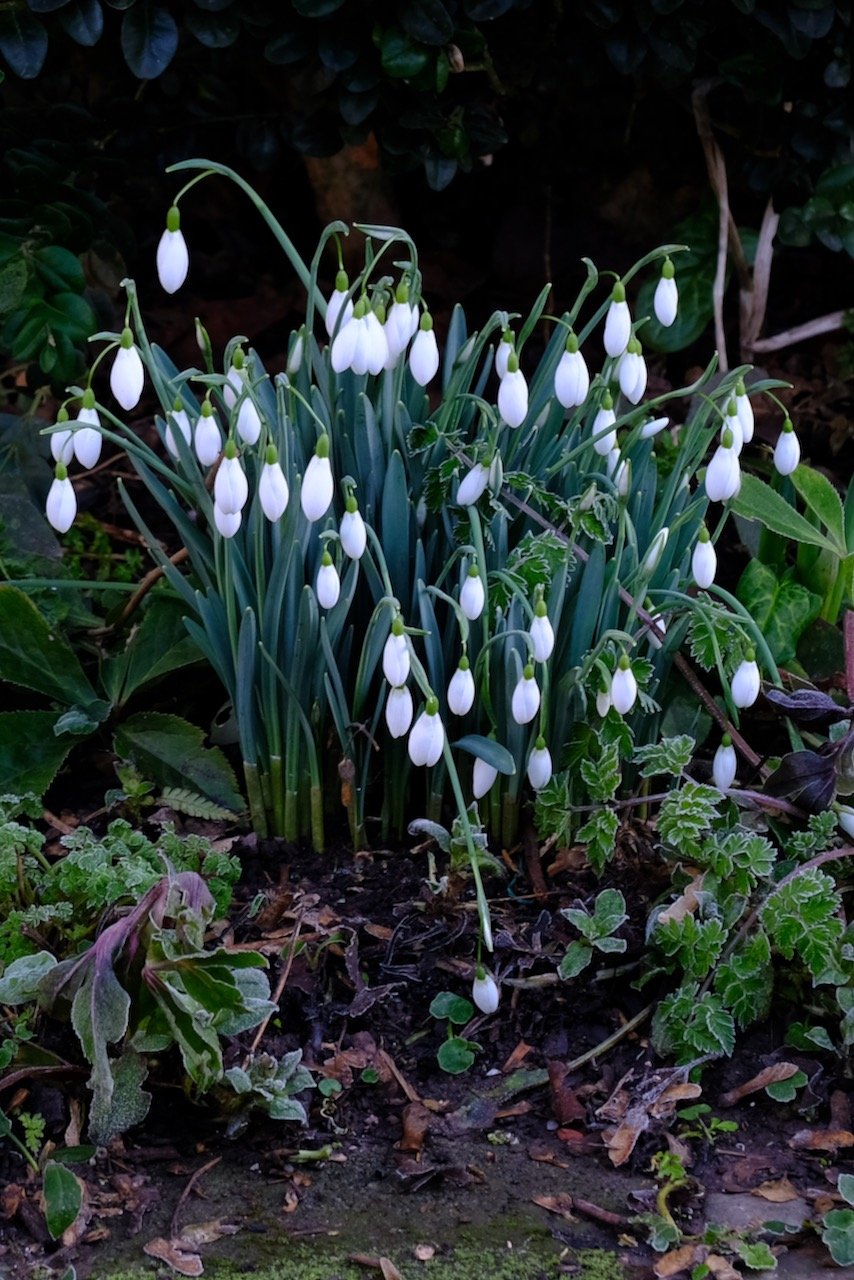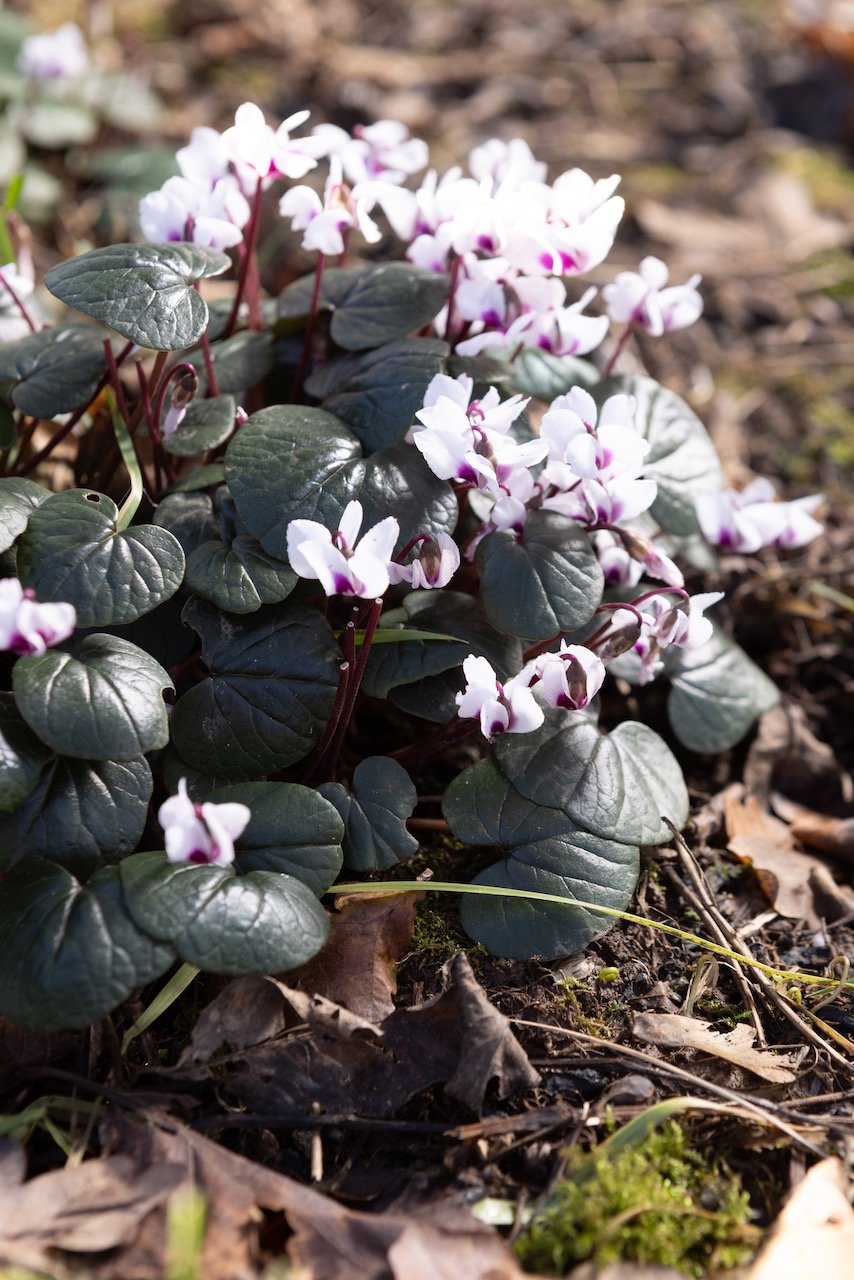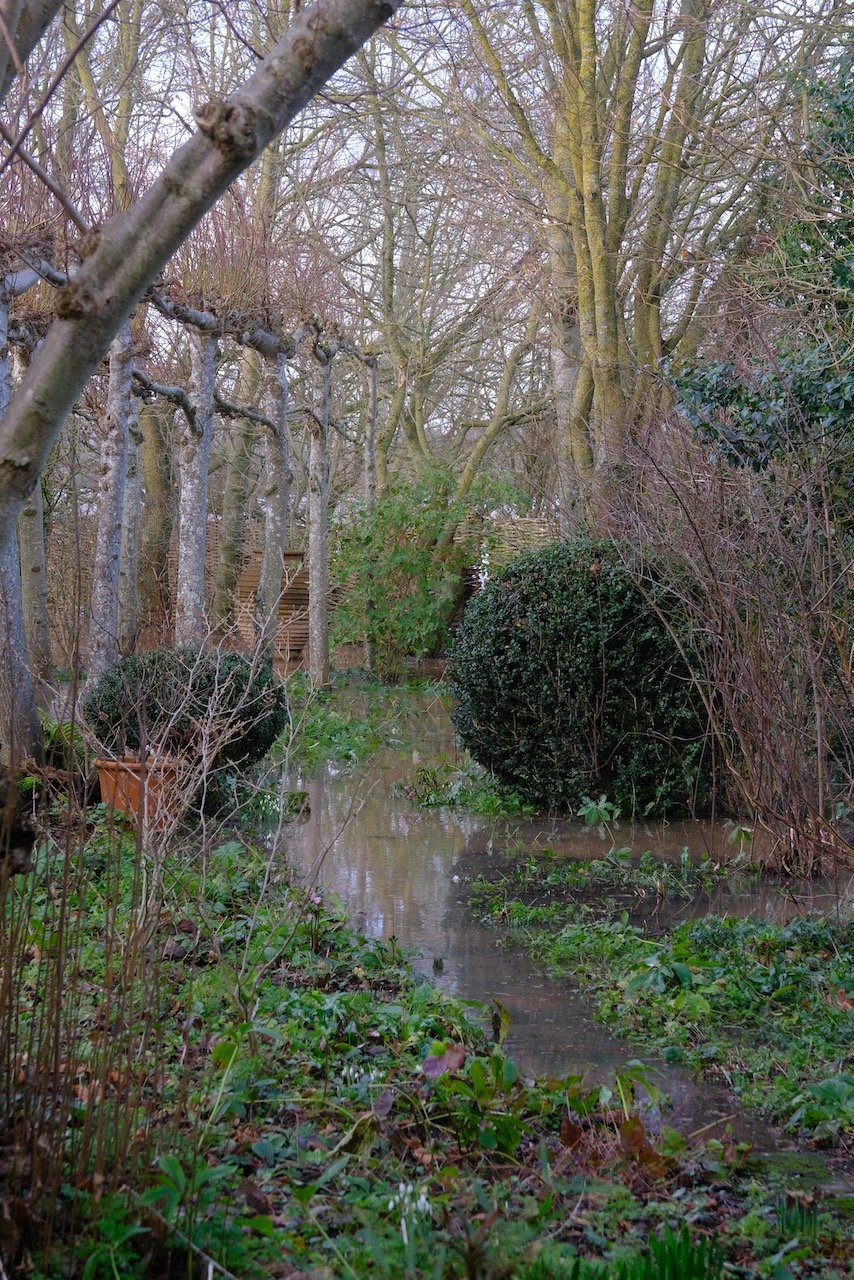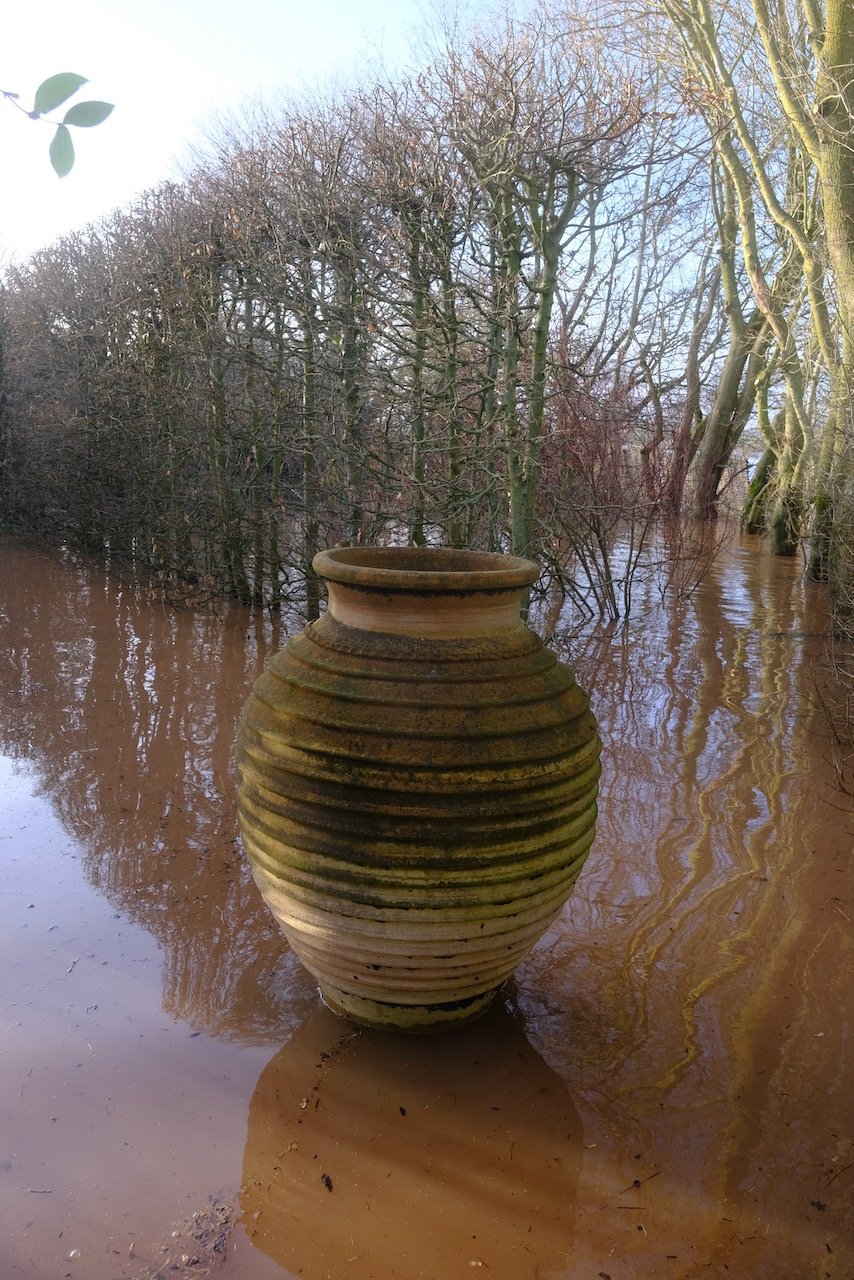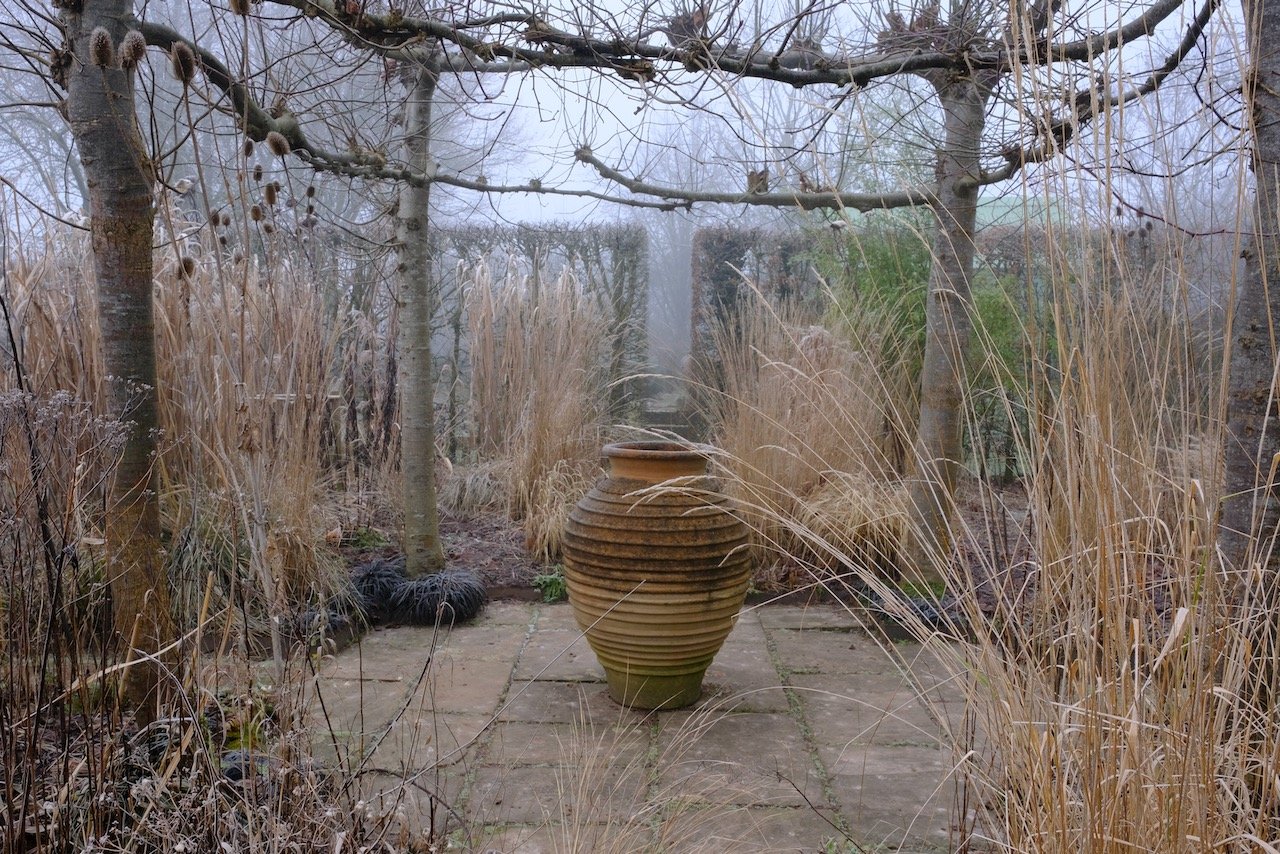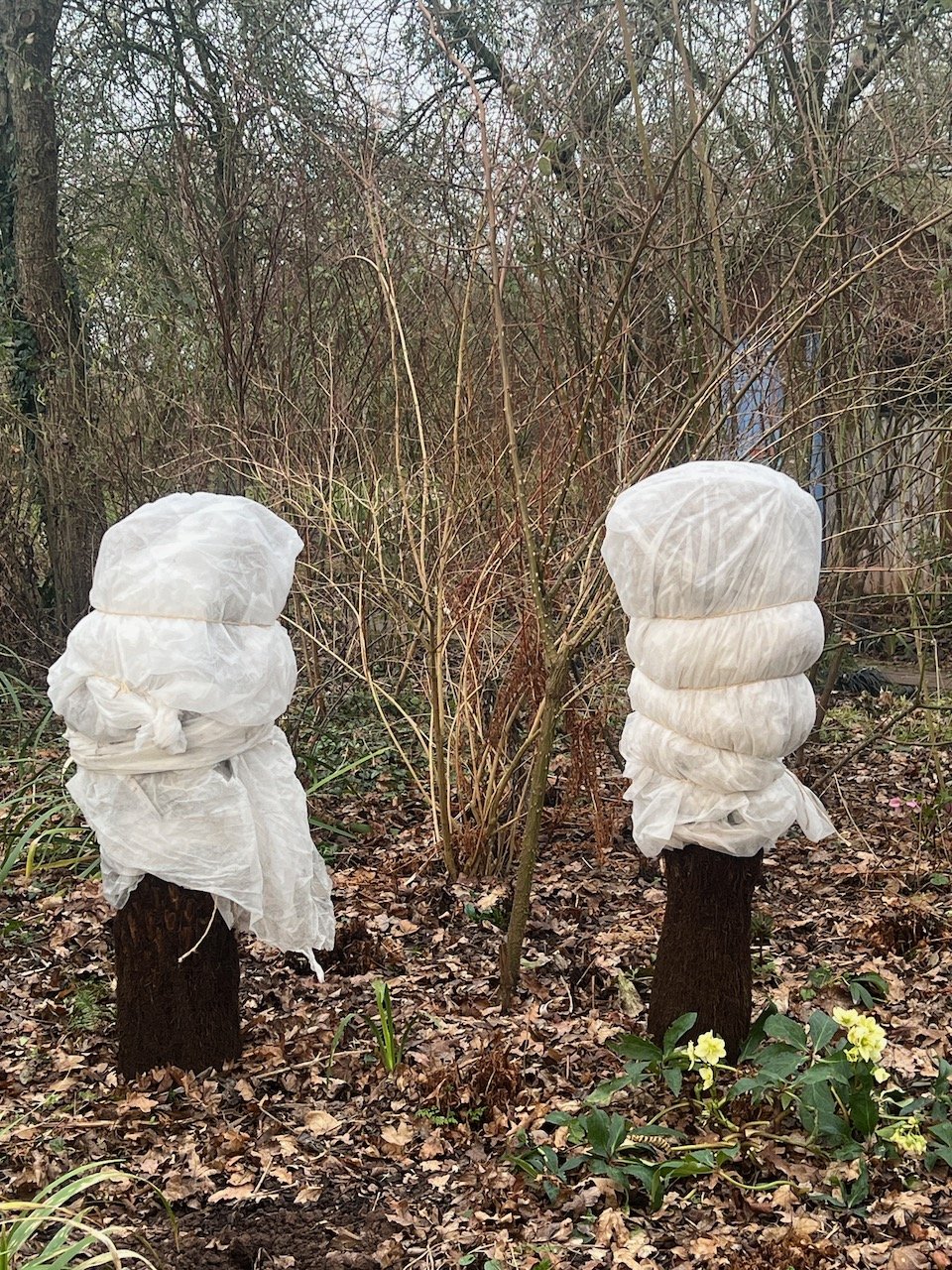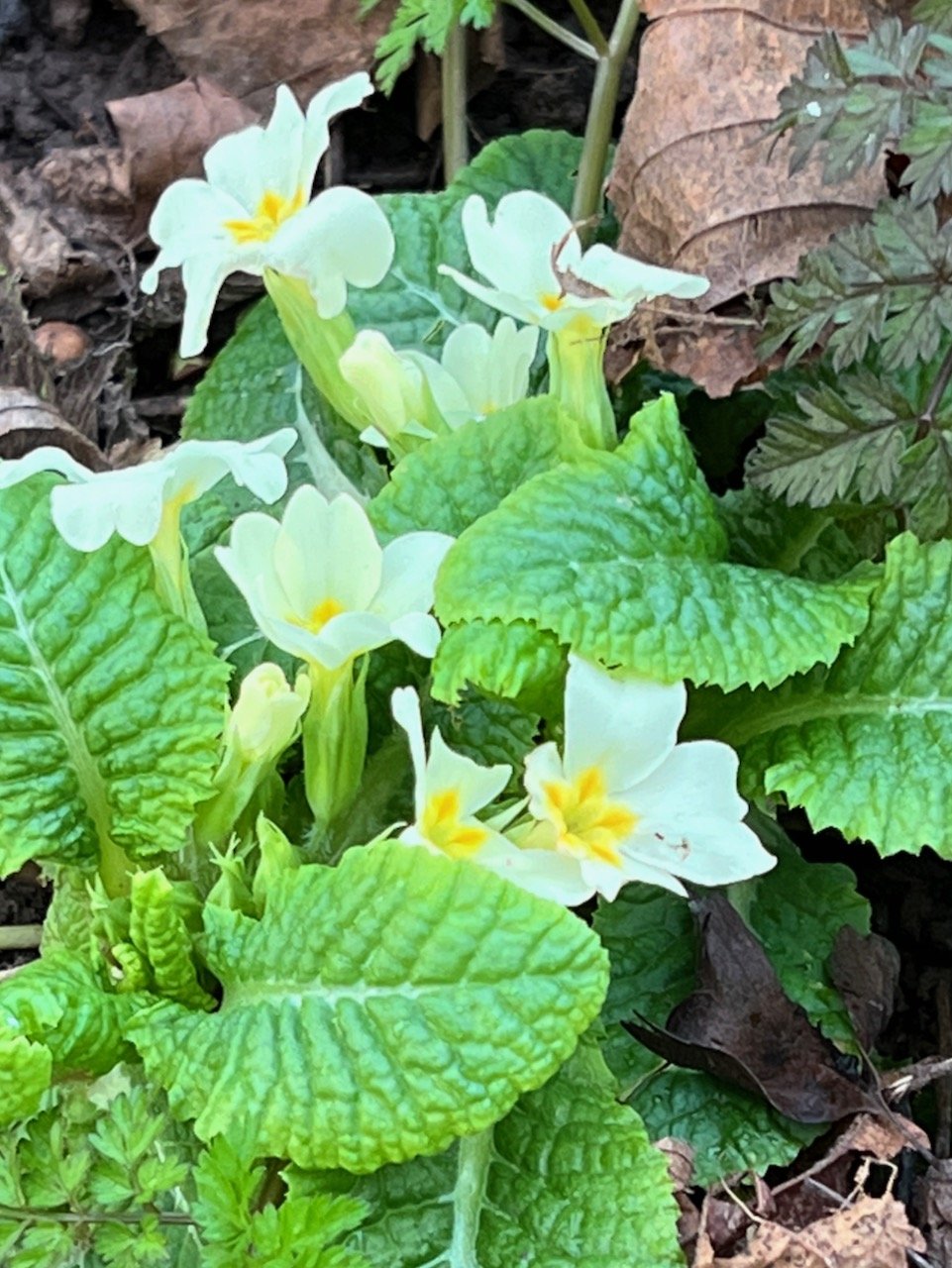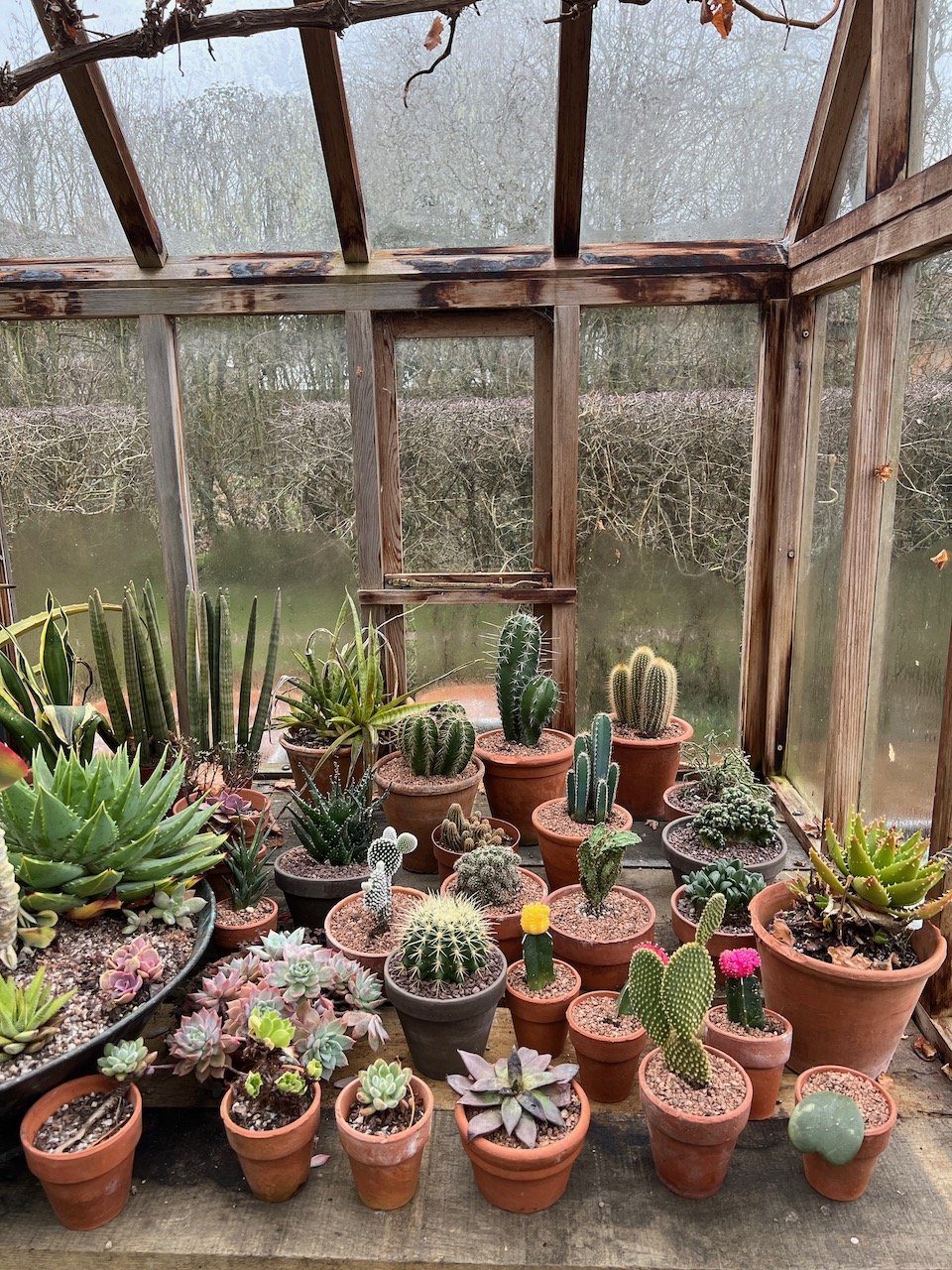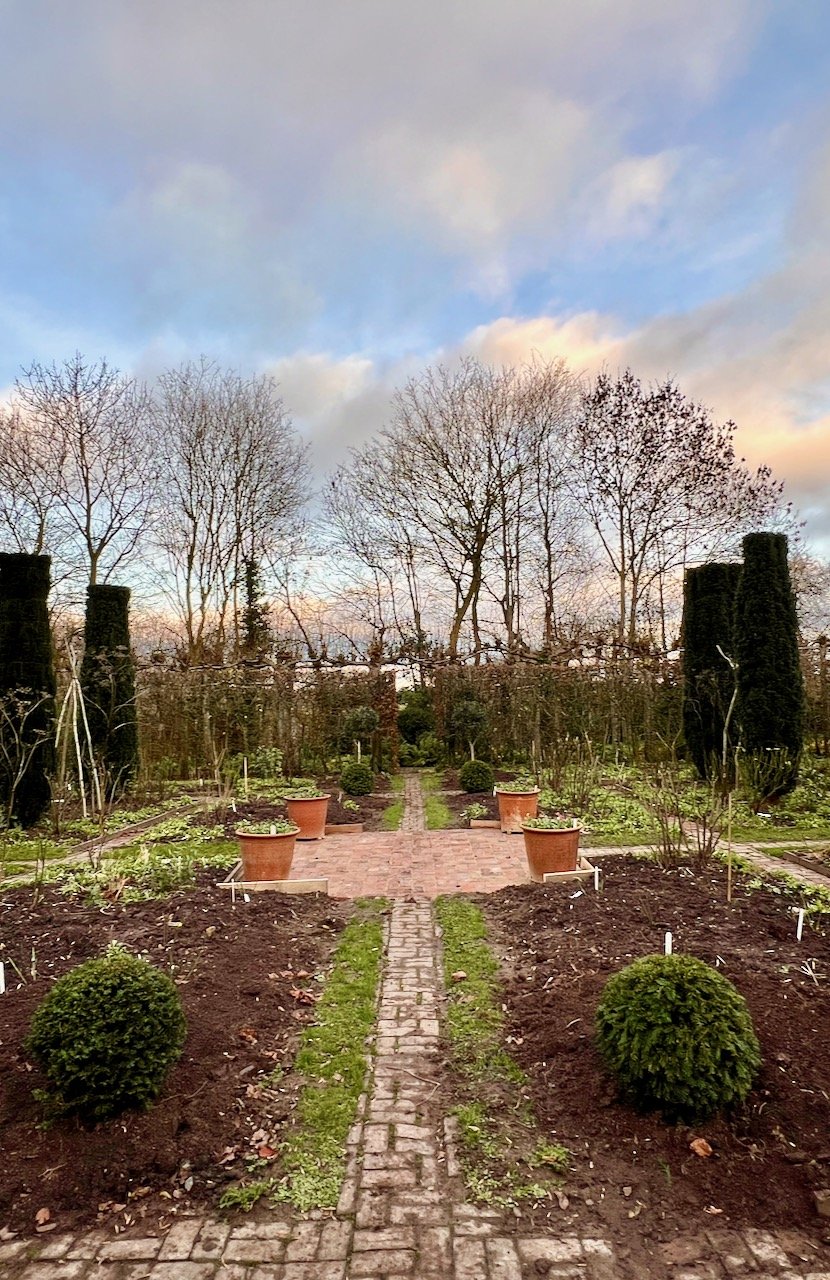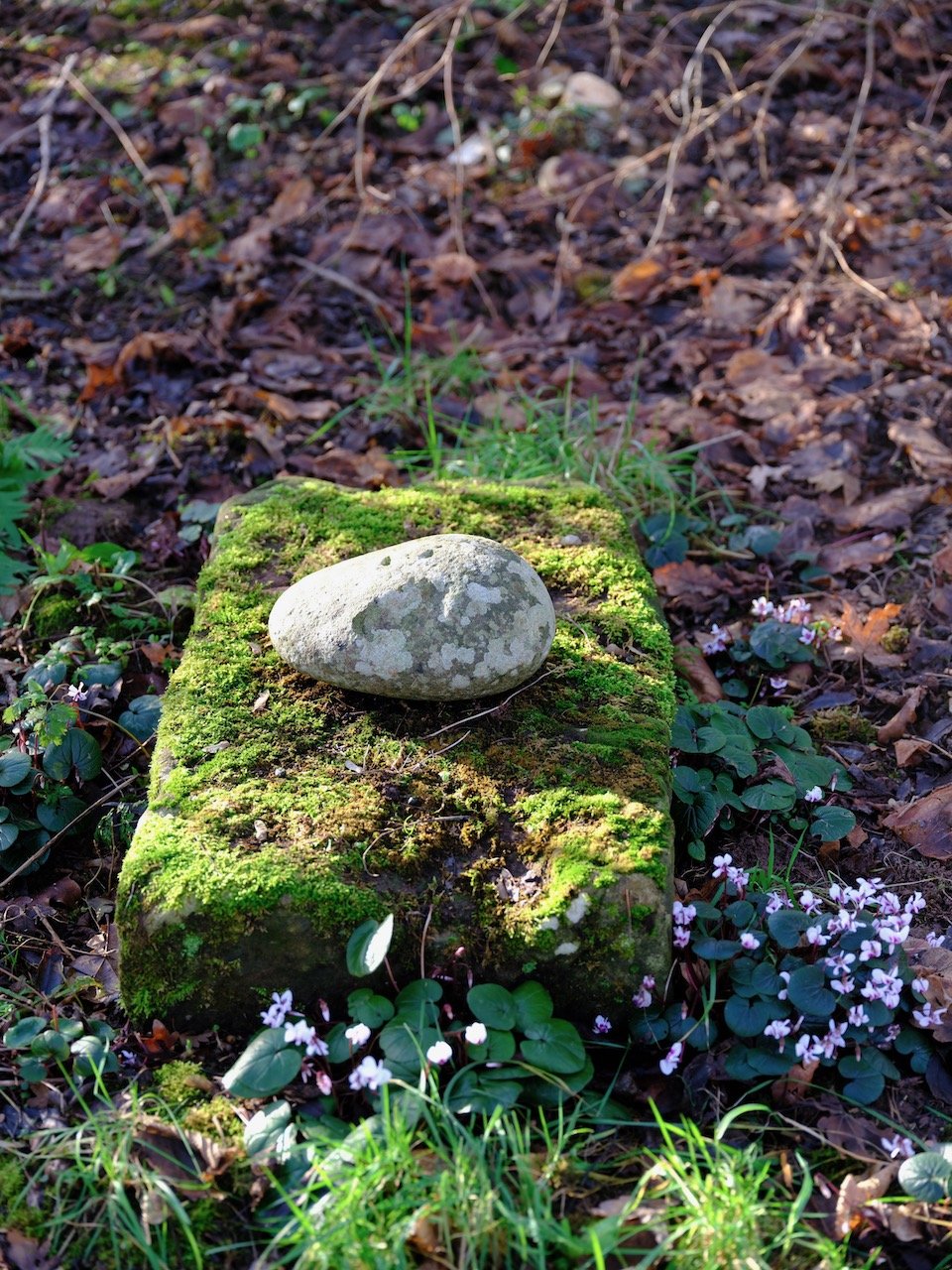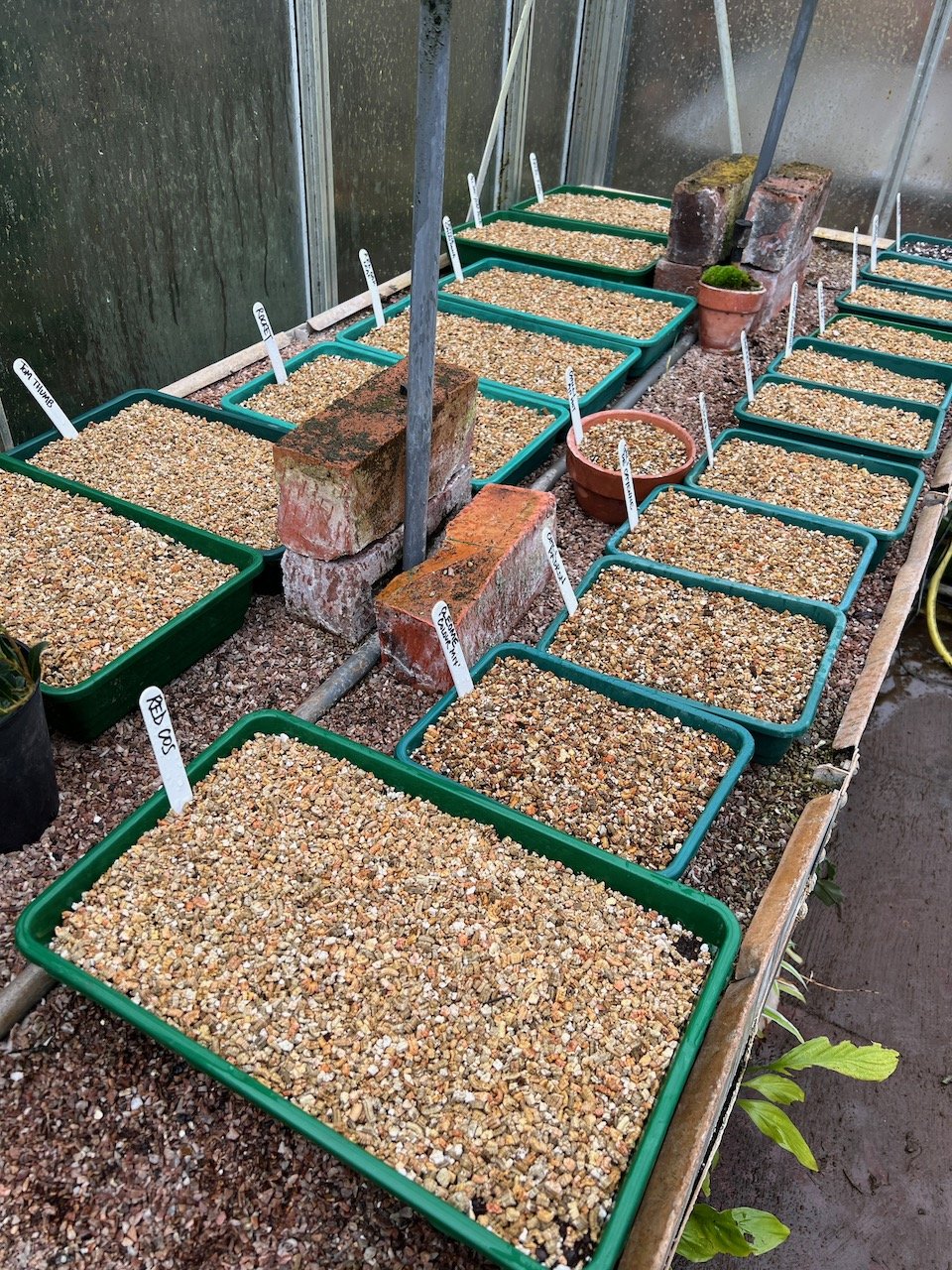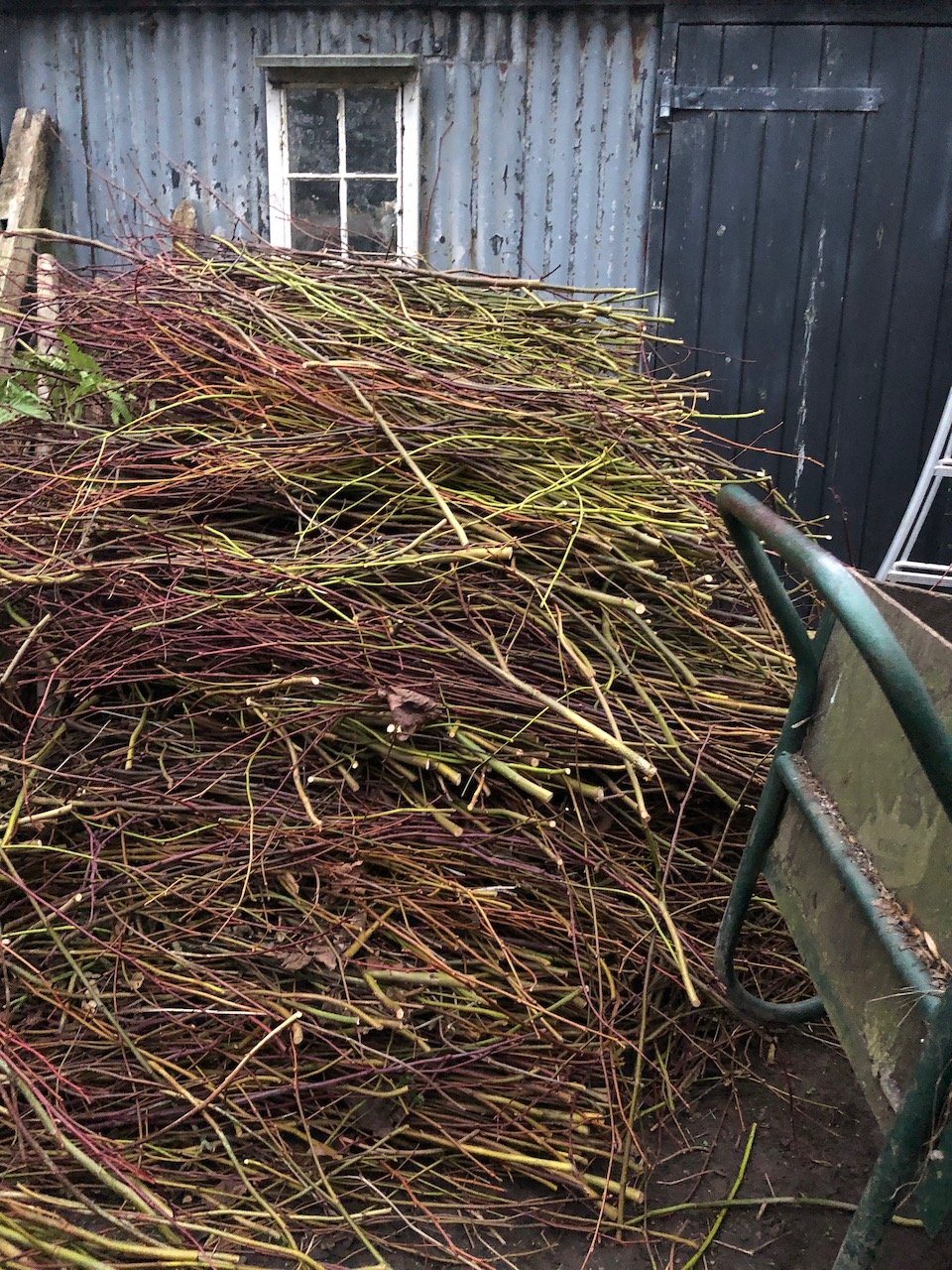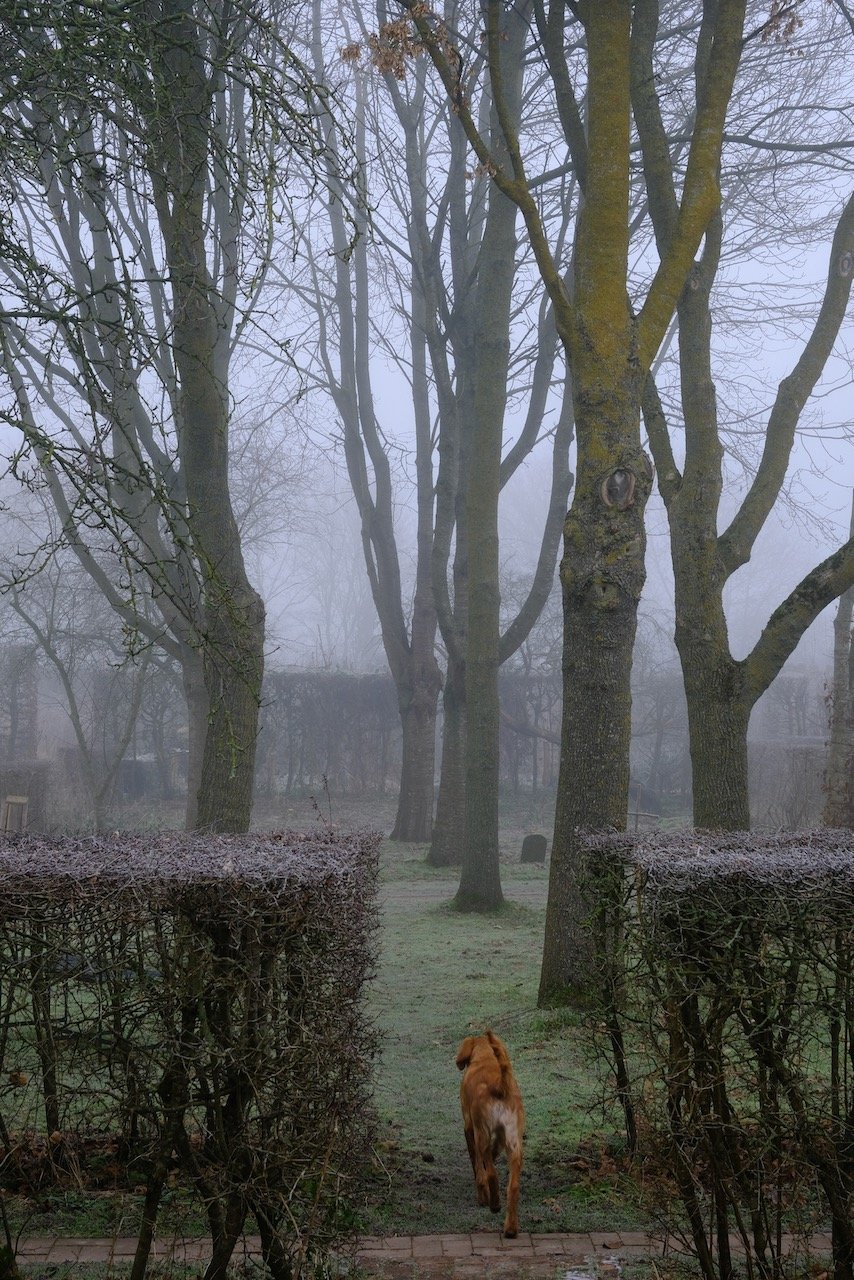January 2024
This garden and all who sail in her is floating into 2024 - almost literally. It has barely stopped raining for the past three months and as I write this the fields as far as the eye can see are under water as is sections of the garden .This is rather beautiful in a calm rather surreal way, especially in the brief gaps between downpours when the waters are still and become a vast lake appearing overnight. But mostly all this rain just means mud, slippery paths and the frustration of not being able to get on with much work in the garden without making a terrible mess.
This is a wet part of a wet country and there have always been very wet periods in British winters but it is definitely getting wetter, warmer and more extreme.
Climate change now means that instead of being something we are observing and monitoring with a detached , almost academic interest, it is really affecting our day to day domestic lives and we have to react to this.
The practical problem for gardeners is that it is too wet in winter and too dry in summer. Very few of our existing garden plants thrive in both circumstances. Plant for one extreme and you find yourself with big problems at the other.
So this is the big, over-riding challenge facing gardeners in the Northern hemisphere biggest it is not going to go away and will not get any easier.
As well as finding a different range of plants we also have to work on adapting how we grow them and this will mean challenging received wisdom. But we should not feel threatened by this. I see it as an exciting and fascinating challenge.
For all the problems of the bigger picture there are still the day to day seasonal jobs that are timely to do in January if the weather permits but do not worry if you cannot get out and get on - almost everything will wait.
A healthy plant will always catch up if put in a little late, which is why at the beginning of the year I put most of my energies into raising really strong seedlings under cover, hardening them off slowly, so that each one is thoroughly ready. This is certainly the best way to deal with most pests and diseases.
One of the things I like best about January - even when the weather is so wet - is the grey, pearly light on the bare, stripped back bones of the garden. It creates a ghostly, misty atmosphere that is unique to the early weeks of the year.
And climate change means that as well as wetter, warmer winters, we also have earlier flowering of many early spring flowers such as snowdrops, crocus, hellebores, primroses, aconites, irises and shrubs such as winter-flowering honeysuckle and wintersweet.
JANUARY JOBS
TULIPS
It is not too late to plant tulips - but you really do need to get on with it. Tulips planted now might flower a little later than those planted in November but they will make a perfectly good display. If intending to leave them in the ground plant as deeply as you can - at least 4 inches. But if you just want a good show this year they can be popped an inch or two in the topsoil and will be fine for this spring. When planting in a container make sure that they have good drainage because although they are completely hardy to cold, the biggest enemy is rotting in damp soil. But this is a job to do by the middle of the month at the latest.
THE VEGETABLE GARDEN
The spring salad crops are sown in the first week of January. I always use organic seed where possible. These will include rocket, mizuna, Little Gem and Tom Thumb lettuce and curly endive. This feels like a positive, creative way to start the year. It might be hard frost outside but I sow these into seed trays or plugs using peat-free compost and put them to germinate on a heated mat in the greenhouse.
None of these plants will ever go outside but will be planted into soil in the big greenhouse at the beginning of February and harvested from Mid march through to Mid may when they will be cleared to make room for tomatoes, peppers, basil and aubergines.
If you do not have a greenhouse or tunnel then wait a while before sowing seed. I have learnt the painful way that being too soon with seed sowing is usually more likely to lead to problems than being too late.
SOWING CHILLIES
Chilies are always the first seeds that I sow in the new year. They can be slow to germinate and certainly need some heat, either on a heated bench or on a windowsill above a radiator. Because of this I tend to sow them in seed trays rather than plugs and then transplant them to plugs as soon as the seedlings develop true leaves, potting them on again in March and then to their final terracotta pots in May.
The secret of successful chilli growing - other than plenty of light and heat - is to allow each plant as much time and opportunity to become big and bushy, feeding it weekly with a high nitrogen fertiliser (I use home-made liquid nettle feed) until the first flower buds start to appear in June and then switching to a high potash feed (liquid seaweed or homemade comfrey feed are both ideal) to stimulate as many flowers and subsequent fruits as possible on what by now should be a large plant.
Chilies need plenty of water but hate being waterlogged, so use a free-draining compost and never to water them after 5pm to avoid the risk of them sitting overnight in soggy compost.
ONION SETS AND SEEDS
The advantage of growing onions by seed is that there are so many varieties to choose from. However it is much easier - and more common - to grow them from sets, which are small bulbs. If the ground is dry enough these can be planted now about 9 inches apart in rows with the tips sticking out of the soil. However if it is too wet I suggest planting a batch in plugs in ordinary peat-free compost and protecting them in a greenhouse or cool windowsill where they will establish shoots and roots. Harden them off for at least a week outside before planting out when the soil is dry enough for them.
POINSETTIA
Hundreds of thousands of poinsettias are given as Christmas gifts and with a little care these can be made to last looking good for months.
Modern poinsettias grown as houseplants are treated with a growth retardant to create the familiar short, bushy shape we all know and love but in their native Mexico poinsettias grow at the margin of the forest to a large 10ft high shrub .
Poinsettias are only really comfortable in damp warmth. They do not like cool nights, very hot dry rooms or big fluctuations in temperatures, so keep them where there is a constant average temperature, avoiding draughts, cold windows or even very bright spots that can get very hot in the middle of the day.
They like plenty of water but let the compost dry out before giving them a really good soak, standing the pot in a sink full of water and leaving it to stand for 10 minutes or so before letting the excess water drain from the pot.
WINTER PRUNING of FRUIT TREES
This is always my big January job and if nothing else this is something I like to have finished by the end of the month.
Try to understand how something grows before pruning. Does it flower on new or old wood? Does it grow new shoots in a great post flowering burst or do they steadily emerge over the season? Does a fruit tree need to achieve a certain maturity to create spurs that bear fruit or will they be produced in the first year of growth? Does the plant heal well or is it , like cherries and plums, a bleeder - and if so when does it produce least sap? If in doubt about any of this - don’t cut. Wait. You will never do harm by not pruning and patience in a garden is a great virtue.
if you prune an apple tree hard each winter it will make a mass of new growth but no flowers – and therefore no fruit. This cycle is often perpetuated by even harder pruning the following year – to get rid of all that new, fruitless growth, which, having lots of lovely succulent sap, will attract aphids and fungal disease. So through over-zealous and mistimed pruning people often ruin their fruit trees.
If you wish to curtail growth you leave the pruning to summer - July is ideal - when the foliage is fully grown and before the roots start to store food for winter. Do not prune plums, apricots, peaches or cherries (these should be pruned in late Spring and only if absolutely necessary).
APPLES AND PEARS
The idea is to produce a tree that has plenty of light and air reaching the centre. I do this by imagining a pigeon flying straight at the tree and pruning it so it can fly right through it from any angle. In principle you are trying to make a goblet-shape or a cupped hand with the fingers making the branches around the empty palm.
Start by removing any crossing or rubbing branches. Cut back any overlong or straggly branches to a bud to promote vigorous multi-stemmed regrowth. Keep standing back and reviewing the shape so that it both looks handsome and retains a strong, open structure.
Always use very sharp secateurs, loppers and saws and never strain - always use an implement that is working well within its capacity. That way you retain control and risk least damage to the tree - and yourself.
Traditional advice was to paint any large wounds made by pruning but current thinking is that this does more harm than good as it seals in moisture and disease. By far the best course is to leave a clean cut and let heal over itself.
TRAINED FRUIT (CORDONS, ESPALIERS, FANS)
You must be counter intuitive with these. Remember that the harder you cut, the stronger the regrowth - so cut back any weak growth in winter to encourage vigorous new shoots in spring. You must then prune again in July to restrict growth.
PRUNING SOFT FRUIT
Cut back autumn fruiting raspberries to the ground, removing all of last year’s canes. Cut away all crossing and inward growing growth from red currants and gooseberries to create an open goblet shape. Reduce remaining growth by a third to create a strong framework of branches.
I always take a few cuttings from the pruned material of Gooseberries and redcurrants because they strike very easily and it means I can constantly add new, vigorous plants to replace the older ones. Simply select a nice straight shoot and divide it into lengths between 4& 9 inches (10 & 20cm) long. Cut the top of each section at an angle and the bottom straight so that you remember which way up they should be.
Place the cuttings around the edge of a pot filled with a gritty compost mix, burying them deeply so that only an inch or so is above the surface. Water them and put them in a sheltered place. They will not need any extra heat or protection and will take a few months to show signs of growth - which will be the indication that roots have formed. They will be ready to pot into individual pots by mid summer and to plant out next winter.
PRUNING TRAINED DECORATIVE TREES AND SHRUBS
We try and prune our pleached lime trees in January and if any hedges need regenerating, this is the best time to do it.
The limes have all their new growth removed, taking them back to the basic structure which will then renew itself in spring. This creates thousands of brightly coloured whippy stems that we shred and use as mulch and for temporary paths.
If you cut hedges now they will regrow with extra vigour so it is the best time to cut back a weak hedge - whereas a trim in summer will restrict growth. If you have a very overgrown deciduous hedge it can be taken back right to the ground and will regrow afresh to make a hedge that is thicker and denser but more manageable.
However this does not work for many evergreen hedges other than yew, box and holly and in any event these should be cut back in spring and not in January.
MULCHING
The best time to put down a mulch is whenever you get round to do it, because the pros of a good organic mulch - which are weed suppression, moisture retention and improved soil structure and fertility - always outweigh any cons such as suppressing ‘little treasure’ seedlings. However, we do try and mulch all our borders in January because this gives time in autumn for the borders to die back gracefully and allow birds to eat all seeds and berries but is early enough not to suppress the growth of bulbs such as alliums and tulips that start to appear by the end of February. Whenever you mulch the same rules apply: use a well-rotted organic material such as mushroom compost, garden compost or bark chips (we use pine bark on the grass borders for a little extra acidity) and be generous with it. Spread the mulch around all existing plants at least 2 inches thick and twice that is twice as good. In principle the thicker the mulch is the better it will do its work so it is more effective to mulch half the garden every other year well than all of it annually but inadequately.
GARDEN COMPOST
One of the fall-outs of Christmas is the enormous amount of paper that it generates. But all the wrapping, packaging and cardboard can go on the compost heap. At this time of year there can a shortage of ‘green’ or nitrogen-rich material such as mown grass to leaven the carbon-rich material like cardboard and paper, but it all rots down and will end up as part of the mix over the coming months.
It is important to turn your compost, even in the coldest weather (and it is a good job to warm yourself on a frosty day). Even though we think of the process of turning and making compost as heating it up in fact the important thing to do is to add oxygen and this stimulates bacteria to digest the material, be it kitchen waste or Christmas packaging, which in turn generates heat, even in mid winter.
At this time of year I also like to spread a layer of finished compost on any vegetable beds that are not carrying a crop so it can be worked into the soil by worms and weather, ready for sowing and planting in a few months time. Finally a January job is to sieve compost and bag it up ready to add to potting compost ready for the flurry of sowing in spring.

